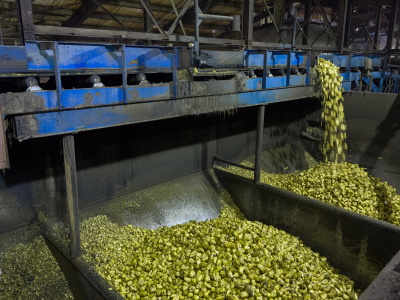The sugarbeets enter the factory to be washed to remove leaves, dirt, mud, or sand before they are fed to the beet slicers.

The beets are then sliced into thin strips called cossettes, which look like french fries. The cossettes are then fed into the diffusion system to extract the sugar. Sugar is diffused from the beets by soaking in hot water and separating it from the plant material.

The juice is then cleaned to remove impurities (non-sugar particles) and extra color to produce a dark sugar syrup called thick juice. After the thick juice is drawn off, beet pulp is left behind – a co-product of sugarbeet processing for livestock feed.

The filtered sugar syrup is boiled to evaporate the water thereby forming sugar crystals. Thick juice, made up of liquid sugar and molasses, goes through the crystallization process and then the crystal and molasses mixture heads to centrifuge.

Centrifuges separate the sugar crystal from the molasses by spinning the sugar faster and faster against a screen while the molasses spins through the screen. The naturally colorless sugar crystals remains.

Once the sugar crystals are dry, sugar is then packaged in 50 pounds bags or stored in bulk for distribution.
